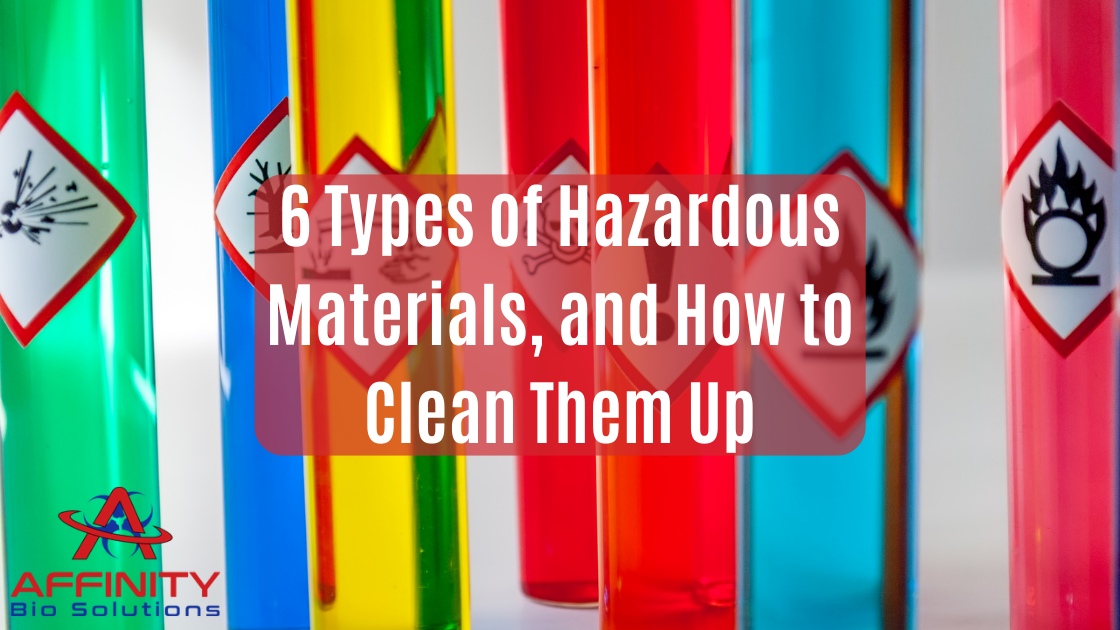
Any material with harmful properties is referred to as hazardous waste. These hazardous materials are capable of harming living things and the environment. They are waste from many sources, including industrial manufacturing wastes, batteries, liquids, solids, gases, and sludges. The EPA states certain criteria for a material to be considered hazardous, and these standards can be complicated.
Types of Hazardous Materials
1.Reactive materials
Reactive materials are unstable and react aggressively with water or air. These chemicals react at low temperatures causing explosions, toxic vapor, or fire hazards. This waste can be acidic or alkaline, damaging any material or tissue upon contact. The category includes bandages, hypodermic needles, and other materials used in the hospital or biological laboratory.
2. Radioactive materials
This waste contains ionizing energy released into the atmosphere, causing harm to living things. This hazardous material has a long lifespan before decaying. However, the government takes the disposal method seriously because of the complexity of the radiation.
3. Listed Materials
There are in different categories, including F-list, K-list, U-list, and P-list. The F-list is waste from different sources during industrial or manufacturing processes from different companies. The K-list materials are tied to specific industries like pesticides or petroleum. This waste is usually wastewater and sludge from the treatment and production process. Finally, the P-list and U-list are raw commercial chemicals like pharmaceutical products and pesticides.
4. Characteristic Waste
These hazardous materials are categorized according to ignitability, toxicity, or corrosivity. Ignitable waste can burn at a low flash point of 140 degrees or spontaneously combustible. Corrosive materials are materials that can melt containers. For example, acid and base are corrosive to drums, tanks, and barrels. And toxic waste is lethal or harmful to humans upon ingestion.
5. Infectious or Biohazardous Waste
Infectious or biohazardous waste needs proper incineration or chemical disinfectant before disposal. The waste results from infected agents or materials that threaten the public or the environment. This can be waste from autopsy, bodily fluid, infected animals, and culture or stock of infected agents.
6. Mixed Waste
Mixed waste is material with hazardous and radioactive elements. These wastes are classified under two federal statutes and regulations – Resource Conservation and Recovery Act (RCRA) and the Atomic Energy Act (AEA).
Ways to Dispose of Hazardous Waste
- Underground disposal
The easiest way to clean up hazardous materials is underground disposal. The material is buried in inactive or partially active mines but with specific geological and technical criteria. The method effectively uses radioactive waste from medical treatment, biological laboratories, radioactive ore, and nuclear fuel.
- Landfill disposal
These methods – dumpsites and landfills are old methods of disposing of hazardous materials. The landfill method is usually used for disposing of liquid waste underground. The waste is protected with clay, HDPE, or non-porous materials to stop the liquid from leaching.
- Ocean dumping
The method is used to dispose of waste that has been treated and hazardous elements extracted to prevent impact on marine life. However, you must have a permit from EPA and follow their strict standard.
Contact Affinity Bio Solutions for All Your Professional Biohazard Cleanup Needs
- Biohazard Cleanup & Removal
- Crime Scene Cleanup | Trauma Scene Cleanup
- Unattended Deaths & Decomposition
- Suicide Cleanup
- Medical Waste Pick-Up, Transport and Disposal
- Water Damage | Flood Extraction
- Hoarded Environment & Hoarder Home Cleanup
- Vehicle Accidents | Vehicle Biohazard Cleanup
- Bodily Fluids | Blood Cleanup
- Odor Remediation | Odor Removal
- Homeless Encampment Cleanup & Biohazard Removal
- Abandoned Building and Foreclosure Cleanout
- Pest Removal in Arizona
